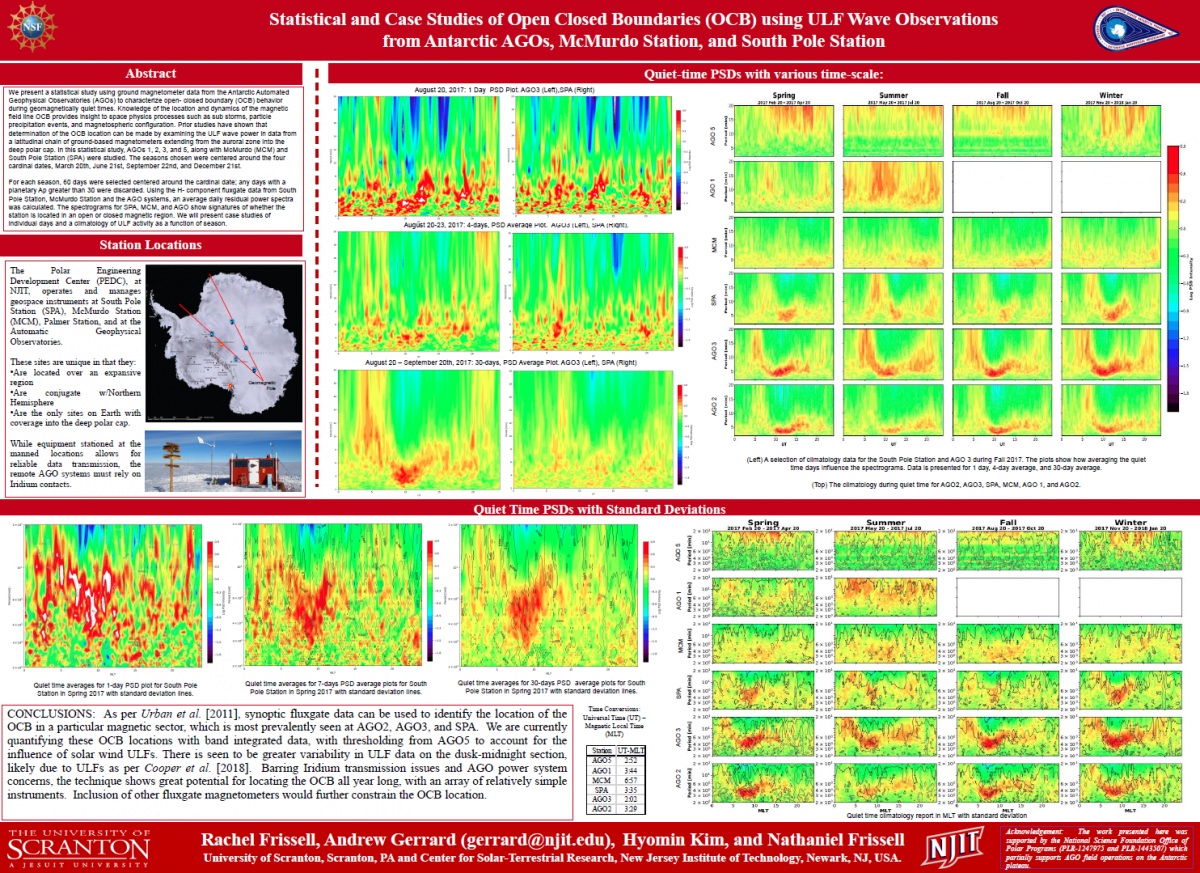| Title | Statistical and Case Studies of Open Closed Boundaries (OCB) using ULF Wave Observations from Antarctic AGOs, McMurdo Station, and South Pole Station |
| Publication Type | Conference Proceedings |
| Year of Conference | 2023 |
| Authors | Frissell, RM, Gerrard, AJ, Kim, H, Frissell, NA |
| Conference Name | HamSCI Workshop 2023 |
| Date Published | 03/2023 |
| Publisher | HamSCI |
| Conference Location | Scranton, PA |
| Abstract | We present a statistical study using ground magnetometer data from the Antarctic Automated Geophysical Observatories (AGOs) to characterize open- closed boundary (OCB) behavior during geomagnetically quiet times. Knowledge of the location and dynamics of the magnetic field line OCB provides insight to space physics processes such as sub storms, particle precipitation events, and magnetospheric configuration. Prior studies have shown that determination of the OCB location can be made by examining the ULF wave power in data from a latitudinal chain of ground-based magnetometers extending from the auroral zone into the deep polar cap. In this statistical study, AGOs 1, 2, 3, and 5, along with McMurdo (MCM) and South Pole Station (SPA) were studied. The seasons chosen were centered around the four cardinal dates, March 20th, June 21st, September 22nd, and December 21st. For each season, 60 days were selected centered around the cardinal date; any days with a planetary Ap greater than 30 were discarded. Using the H- component fluxgate data from South Pole Station, McMurdo Station and the AGO systems, an average daily residual power spectra was calculated. The spectrograms for SPA, MCM, and AGO show signatures of whether the station is located in an open or closed magnetic region. We will present case studies of individual days and a climatology of ULF activity as a function of season. |
| Refereed Designation | Non-Refereed |
| Full Text |

